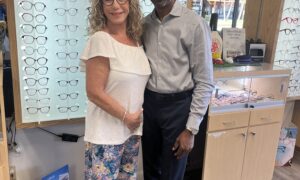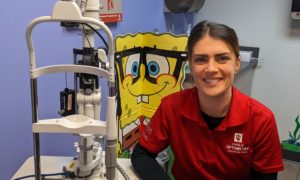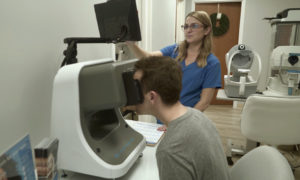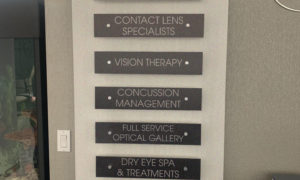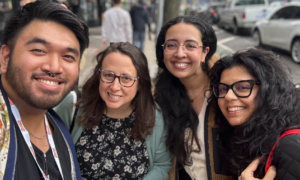September has been named Sports and Eye Health Safety month by Prevent Blindness America. Every year, more than 40,000 athletes suffer an eye injury while playing sports. And, every 13 minutes, an emergency room in the United States treats a sports-related eye injury. You have the opportunity to teach your patients to protect their vision while playing sports by wearing the proper eye protection.
Prevent Blindness America recommends that polycarbonate lenses be used with protectors that meet or exceed the requirements of the American Society for Testing and Materials (ASTM). Each sport has a specific ASTM code. Polycarbonate eyewear is 10 times more impact resistant than other plastics, according to the National Eye Institute. There is no evidence that wearing eye protection hampers athletic performance.
Eye injuries can include painful corneal abrasions, blunt trauma and penetrating injuries, inflamed iris, fracture of the eye socket, swollen or detached retinas, traumatic cataract and blood spilling into the eye’s anterior chamber. The consequences of eye injury can range from temporary to permanent vision loss and even blindness.
Any athletes who have poor vision or blindness in one eye should take particular care to protect their remaining vision. Yet, many forgo eye protection. According to a recent survey conducted by researchers at the Ohio State University, only 21 percent of college football programs required the use of a face shield in players with poor vision in one eye, while a mere 20 percent recommended face shields.
“Whether it be goggles for basketball or face shields for football players, everyone must make eye protection part of their uniform,” Hugh R. Parry, president and CEO of Prevent Blindness America, says. “And we can’t stress enough how important it is for those who have diminished or no vision in one eye to protect their healthy eye while playing sports. An eye accident can happen in a split second yet impact the rest of your life.”
Prevent Blindness America provides the following guidelines to the public for purchasing the best eye protection:
• If you wear prescription eyeglasses, ask your eye doctor to fit you for prescription protective sports eyewear.
• If you’re a monocular athlete, ask your eye doctor what sports you can safely participate in. Monocular athletes should always wear sports eye protectors.
• Fogging of the lenses can be a problem. Some eye protectors are available with anti-fog coating. Others have side vents for additional ventilation. Try on different types to determine which is most comfortable.
• Check the packaging to see if the eye protector has been tested for sports use. Also check to see that the eye protector is made of polycarbonate material. Polycarbonate eye guards are the most impact resistant.
• Sports eye protectors should be padded or cushioned along the brow and bridge of the nose. Padding will prevent them from cutting the skin.
•Try on the eye protector to determine if it’s the right size. Adjust the strap and make sure it’s not too tight or too loose.
•For outdoor sports, look for eye protection that blocks harmful UV rays.
For more information on sports eye injury prevention and information on sport-specific eye protection recommendations: Prevent Blindness America, (800) 331-2020, preventblindness.org/sports-eye-safety.
Download the Prevent Blindness America sports eye safety press release.





